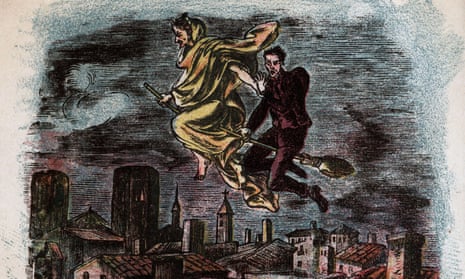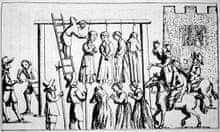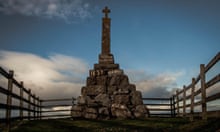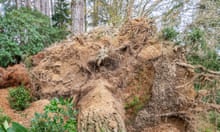The Catalan parliament has passed a resolution to pardon up to 1,000 people – the majority of them women – condemned for the crime of witchcraft in the region 400 years ago.
The move follows similar gestures in Scotland, Switzerland and Norway after more than 100 European historians signed a manifesto titled: They weren’t witches, they were women.
The resolution, which follows a campaign in the local history journal Sapiens, was supported by the leftwing and nationalist parties in the parliament.
Commenting on a TV3 documentary entitled Witches, the Big Lie, the Catalan president, Pere Aragonès, described the witch-hunts as “institutionalised femicide”.
It is estimated that between 1580 and 1630 about 50,000 people were condemned to death for witchcraft across Europe, of whom about 80% were women.
While witch-hunts raged across northern Europe, in Spain the Inquisition had its hands full rooting out heresy among Jews and Muslims who had been forcibly converted to Christianity. The Inquisition was sceptical about allegations of witchcraft.
Catalonia was the exception, however, and witch-hunts persisted well into the 18th century there. What is thought to be the first European law against witchcraft was passed in Lleida in 1424.
According to Pau Castell, a professor of modern history at the University of Barcelona, witch-hunts were more common in Catalonia because rural areas came under the absolute power of feudal lords, and confession alone was sufficient proof of guilt.
He added that, paradoxically, in cases where the Inquisition was called in, the accused were often set free for lack of evidence.
Witches were frequently blamed for the sudden death of children or for natural catastrophes and poor harvests, Castell said.
According to the historian Núria Morelló, suspects were often practitioners of traditional medicine or women of independent means, who were regarded with suspicion.
Unlike the rest of Europe, witches in Catalonia were hanged, not burned at the stake. Castell notes that hanging was cheaper and didn’t waste valuable firewood, although it wasn’t a matter of cutting back on execution expenses; rather that hanging was the regular procedure followed in secular courts of justice, which accounted for more than 90% of all witchcraft trials in Catalonia.
Some Catalan villages hired their own witch-finders. One such was Joan Cazabrujas (John the witch-hunter) in the village of Sallent, whose accusations led to the hanging of 33 women. When the Inquisition later discovered that most of the women were innocent, it had Cazabrujas burned at the stake.
Ivet Eroles, the author of a book on witchcraft in Catalonia, cites the feminist slogan “we are the granddaughters of the witches they couldn’t burn” but says that “more to the point, we are the descendants of those who murdered them; we are the oppressors’ heirs”.
Spain’s most notorious trial for witchcraft centred on the village of Zugarramurdi in Navarra, where it was claimed that men and women, including priests, practised witchcraft in a large cave.
Before the trial began in nearby Logroño in 1609, altogether 7,000 people were investigated – an astonishing number given that, even today, Zugarramurdi has a population of 225.
Two thousand suspects confessed, nearly three-quarters of them children, but nearly all later retracted. In the end, 11 were condemned, of whom five had already died in prison. The remaining six – four women and two men – were burned at the stake.
Children, one as young as five, were also prominent among the 200 accused of witchcraft in Salem, Massachusetts, between 1692 and 1693. The witch-hunt was partly sparked by an influx of refugees resulting from Britain’s war with the French over Canadian territory, which fuelled local faction fighting.
Fourteen women and five men were hanged, while another man was pressed to death with heavy weights. The colony later accepted the victims’ innocence and paid compensation to the families.
Four children’s playgrounds in the Catalan village of Palau-solità i Plegamans have been named in honour of condemned witches and there are plans to name Catalan streets and squares as a form of memorial.








